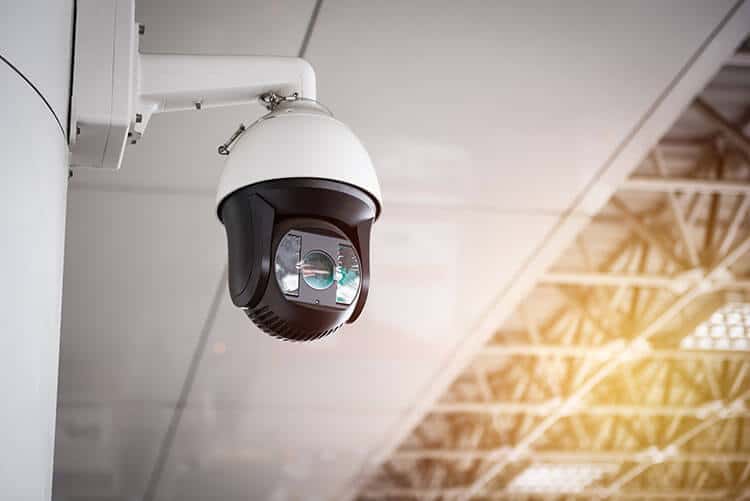Video surveillance is a system of cameras and recording devices used to monitor an area or person. It is also known as “CCTV” (closed-circuit television) or “IP” (Internet Protocol) surveillance. Video surveillance systems have become increasingly popular in businesses, homes, and even public places.
But what do you know about them? Let’s find out…
Video Surveillance Systems
Surveillance systems consist of various components, such as cameras, recording devices, and monitors. Video surveillance systems are designed to detect any suspicious activity or potential threats. They can also be used for other purposes, such as collecting evidence for criminal investigations or monitoring employee activities.
The two most common types of surveillance systems are analog and digital. Analog systems use coaxial cables and are less expensive than digital systems. Digital systems use IP cameras which are more expensive but offer higher-resolution images.
When installing a video surveillance system, it is important to consider the type of area you will be monitoring, the number of cameras you will need, and the placement of the cameras. It is also important to consider the type of recording device you will use, such as a digital video recorder (DVR) or a network video recorder (NVR).
Video Surveillance Software
Video surveillance software is a computer program used to manage and store video data. It can be used to monitor live video feeds, record video footage, and analyze data. The software can also be used to trigger alarms in case of suspicious activity.
Most video surveillance software is available as either a cloud-based solution or an on-premise solution. The cloud-based solutions are typically more expensive but offer more features and flexibility. On-premise solutions are less expensive but may require more maintenance.
When choosing video surveillance software, you should consider the type of cameras you will be using, the level of security you need, and the budget you have available. You should also consider the type of analytics you need and the type of video storage you will need.
Video Surveillance Companies
There are many companies that offer video surveillance services. These companies typically provide installation and maintenance services, as well as support and training.
The following are some of the most popular options:
Axis Communications
Security system provider Axis Communications provides services to more than 50 countries. With more than $1.3 billion in annual sales, they are among the biggest and most renowned video surveillance manufacturers worldwide. The majority of the time, Axis sells its products to distributors, who then sell them to resale shops and system integrators, who ultimately sell them to consumers. But, companies can also make direct purchases from Axis. A wide range of support services is also provided by Axis, including hardware and supplies, how-to manuals, and educational and training possibilities.
Dahua Technology
Manufacturer and reseller of security and surveillance systems, Dahua Technologies offers “end-to-end” solutions. They actively market their goods to suppliers as well as companies that require protection. With a support system, numerous security solutions, and other features, Dahua provides a comprehensive security solution. Be aware that Dahua offers more than just video surveillance. They also provide additional office supplies including mobile thermal temperature cameras and video conferencing.
Panasonic
Since 1960, Panasonic has been a pioneering technological company, producing CCTV and security cameras. In addition to wireless, indoor/outdoor, day/night, weather-proof, encrypted communication, and other possibilities, they provide about 100 distinct video surveillance alternatives.
Sony
Sony is a top producer of technological products, including security systems, imaging, audio, and video. Due to their clear, high-definition video image quality, they are a well-known manufacturer of video surveillance systems. Moreover, Sony specializes in offering hybrid security solutions, enabling companies to easily combine several security systems into a single platform. They frequently sell their goods to wholesalers and retailers.
Verkada
A well-known manufacturer of security systems, Verkada specializes in systems for access control and video surveillance. Conveniently, organizations may utilize the cloud-based “Command” platform to remotely manage their access control system and video surveillance system utilizing Verkada’s security solution. Businesses can manage all security equipment from a single location with this integrated platform, and they can also get updates automatically.
What is the purpose of video surveillance?
The purpose of video surveillance is to monitor an area or person for suspicious activity or potential threats. It can also be used to collect evidence for criminal investigations or to monitor employee activities.
Video surveillance can also be used for other purposes, such as monitoring traffic, detecting intruders, and preventing shoplifting. It is also used to improve safety in public places, such as shopping malls and airports.
Is CCTV the same as video surveillance?
No, CCTV (closed-circuit television) is not the same as video surveillance. CCTV systems typically use a single camera connected to a monitor. Video surveillance systems, on the other hand, typically use multiple cameras connected to a recording device.
What are the benefits of video surveillance?
The benefits of video surveillance include increased security, improved customer service, and better management of resources. Video surveillance can also help reduce theft and vandalism, as well as improve safety in public places.
What are the four elements of surveillance?
The four elements of surveillance are monitoring, recording, analyzing, and responding. Monitoring involves observing a particular area or person. Recording involves capturing video footage from cameras. Analyzing the video involves reviewing the footage for suspicious activity or potential threats. Responding involves taking appropriate action in response to suspicious activity or potential threats.
Which type of camera is used for video surveillance?
The type of camera used for video surveillance depends on the type of surveillance system being used. Analog systems typically use coaxial cables and are less expensive than digital systems. Digital systems use IP cameras, which are more expensive but offer higher-resolution images.
Different Types of CCTV
IP cameras are becoming increasingly widespread as image resolutions and network/internet speeds increase. While analog systems are frequently less expensive and subject to fewer bandwidth restrictions, they are unable to match IP cameras’ video analytics, scalability, and cabling/wireless flexibility.
Operators wishing to use a cloud-based surveillance storage solution, where video footage is sent directly to offsite servers, might consider IP cameras.
#1. Resolutions in High Definition (HD) and Ultra High Definition (UHD)
High definition (2MP) resolution is currently the minimal requirement, while 4K (8MP) resolution is now the norm for both HD analog and IP cameras. Where several manufacturers offer ultra-high resolutions as standard on static camera options.
Now that 8K (33MP) solutions are starting to hit the market, operators have more “ultra high resolution” possibilities. According to reports, they are ideally suited for high-security settings like stadiums, transportation hubs, and other public areas vulnerable to terrorism. Although such devices tend to be on the more costly end of the market, they are ideally suited for scenarios that call for recording video for evidentiary reasons, especially when high degrees of magnification are necessary without pixelating the image.
Typically, ultra-high definition cameras will need additional bandwidth to communicate their images to the recording system due to processing restrictions with very big resolutions, which may force a trade-off between frame rate and bandwidth; (i.e. real-time video may not be possible).
#2. Boxes Camera
The standard type of camera is still a box camera, to which a user-selectable lens is placed at the front and wires are attached at the back (depending on operational requirements). In addition, a few “box” models—which are uncommon—have an integrated lens, possibly even a zoom lens.
A protective enclosure or “house” is advised if the naked camera and lens are anticipated to sustain damage from dirt, rain, frost, heat, or tampering. Simple rectangular or cylindrical boxes with a window for the camera’s view, cable ports for power and video, and a mounting bracket are the simplest dust-proof solutions. They are probably labeled as “IP54,” which denotes that the Ingress Protection is legally dust- and splash-water-protected but not rain-proof, thus they are frequently fine within buildings.
As a minimum, IP65 (dust-tight and protected against water jets) is advised for outdoor use, and a parasol should be added to reduce glare on the housing window. Ventilating fans/blowers can be specified to lower camera temperatures in hot and cold situations, and thermostatically controlled electrical heaters can be specified to stop window misting.
In grimy conditions, a “windscreen” wiper or, in extreme cases, a squirting washer may be advised. These “shoebox” housings allow for easy camera and lens changes as needed in the future and are conveniently carried by the motorized pan/tilt units that are described below.
#3. Fully Integrated Camera
The majority of other camera types are essentially completely integrated assemblies that are manufactured with the camera, lens, and housing all intertwined, giving up operational freedom for installation simplicity. They come in a variety of casings and frequently have LED lights.
#4. Bullets Camera
Although rectangular versions are now prevalent, the cylindrical shape of bullet cameras is where they got their name.
A bullet camera is typically used for outdoor applications since it frequently comes with IP (ingress protection) approved casings and head covers that guard against dust damage and interference with the lens face. They are also said to be simple to install because they frequently only require screwing them onto a mounting bracket.
#5. Camera Cubes
Little block-shaped HD or UHD cameras are known as “cube cameras,” and they may also include a number of other features, such as:
#6. Dome Cameras
Dome cameras have replaced the classic “white shoebox” as the preferred housing for compact camera assemblies. This is because CCTV users like the way they look.
Dome cameras, which have a hemispherical dome enclosing the camera/lens module and are utilized in various contexts, often include vandal-resistant casings as part of crime prevention strategies.
Most of them can be easily surface-mounted on walls or ceilings, recessed into ceiling tiles for a lower profile, or hung as a “pendant” from exterior corner brackets or masts on a “swan neck.” A varifocal lens is typically present on domes that house static cameras so that installers can fine-tune the precise field of view.
#7. Fully functional (PTZ) cameras
PTZ, or pan, tilt, and zoom. These cameras are well-liked for their adaptability, offering a portable choice that can cover a large region. They are frequently used for wide-area surveillance applications in places like cities, transportation hubs, sports stadiums, retail centers, and warehouses because they give operators the option to manually control their cameras or program them to ensure they receive the most accurate view possible.
A fully working dome camera (speed dome) is a common option when lightweight equipment will do. In fact, the insides are so light that some say they can rotate at up to 360°/sec. Although they also reduce the camera’s low-light performance, darkened domes can make it harder for people being watched to determine the camera’s direction of view. Unfortunately, wipers and LED illuminators are useless with this kind of PTZ.
‘Ball’ PTZ cameras combine lightweight dome innards in very durable metal ball-shaped shells carried by quick externally integrated pan/tilt motors for tough applications. Several of these feature wipers and potent, camera-moving IR/white light LED illuminators.
PTZ camera/zoom lens combos and low-voltage camcorder assemblies have a lot in common. They both have things like 48:1 optical zoom and auto-focus. Adding telemetry control, along with options like the preset memory function, privacy zones that move automatically to keep user-programmed areas hidden from the camera, auxiliary alarm inputs/outputs, wireless communications, and video content analysis with automatic target following, is made possible by the small but powerful onboard computing power. Several contemporary devices include auto-tracking capabilities that let them catch and record moving subjects, even while the operators are not at their stations.
PTZ cameras are also a helpful deterrent because when they automatically pan an area, they can give the impression that intruders or criminals are being monitored.
#8. Panoramic (180/360 degree) cameras
The use of panoramic cameras can effectively monitor broad regions and help to minimize blind spots. While the camera continues to monitor the whole 180/360-degree field of view. Certain models have digital PTZs that enable operators to electronically pan, tilt, and zoom on select regions. These cameras typically require less maintenance because there are no moving parts in them.
What are the types of surveillance systems?
The most common types of surveillance systems are analog, digital, and wireless. Analog systems use coaxial cables and are less expensive than digital systems. Digital systems use IP cameras, which are more expensive but offer higher-resolution images. Wireless systems use radio frequencies to send and receive signals.
- Best Business Security Systems for Small Businesses
- SECURITY CAMERAS FOR BUSINESS: Best Security Cameras and Its Cost
- BEST OUTDOOR SECURITY CAMERA SYSTEM FOR BUSINESS in 2023
- 11 Best Business CCTV Systems In 2023 (+ Reviews)
- OFFICE SECURITY SYSTEMS: Definition, Uses, and Best Security Systems.






